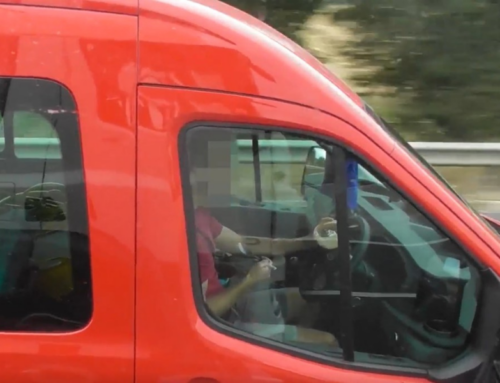Incomplete data makes you blind to fleet risk
If you want to make a real difference to your road safety profile, you need complete visibility of data. As the saying goes, it’s not what you see that catches you out, it’s what you don’t see.
To make a real difference to fleet safety, we need to tackle the root causes of collision. And to tackle the root causes of collision, we need to know exactly what they are.
Many fleets use direct and indirect data to help them map out the causes of fleet risk. This might include monitoring harsh braking, for instance, in order to highlight risky drivers. The data is indicative of a negative trend in that driver’s performance, which suggests other behaviours causing that trend. This could be distraction, driver fatigue, or close following, among other things.
So the indicator alone – while valuable – does not give us complete information about the root cause.
Why does complete fleet data matter?
The problem with working with incomplete data is beautifully illustrated by Matthew Syed in his book Black Box Thinking. Syed contrasts the way that airlines conduct safety reviews with the health care system. The lessons he expounds work very well for road transport.
Syed tells the story of a gifted engineer, Wald, who was tasked by the US Air Force during World War II to work out how much armour they should use on the areas of the fighters which took most fire.
Wald inspected all the planes, which had taken massive fire across the wings and fuselage, but not so much on engines, cockpits or tails. The Air Force leadership therefore wanted to reinforce the planes’ wings and fuselage.
Makes sense, right?
Not to Wald, who immediately saw the huge hole in their data. Or rather, the bullet holes he couldn’t see. Those bullet holes – in the engines, the cockpits and the tails – were in planes which never made it home.
In order to truly make their pilots safer, the USAF had to reinforce the planes from the damage they couldn’t see – not the survivable hits that they could catalogue.
John Anderson, National Logistics Director for Tarmac understands the importance of data for the effective management of fleet risk.
As a logistics leader, quality data and insight powers every decision Tarmac makes and the direction we take. Incomplete or inaccurate data causes delays in identifying the critical areas where we really need to focus, and it is these few areas that really make the difference. The next big leap for us is integrated data across the various platforms we use. Moving to a predictive model based on data intelligence takes us a step closer to zero harm but this will only be possible by working with trusted and innovative specialists. We partner with Masternaut who help us, not just with data provision, but also with understanding the data and its impact on road risk, and how to act on that data effectively.
What does complete data look like?
In road transport complete data means:
- A record of written policies, policies taught and understood, and policy compliance.
- A foolproof system for capturing and acting upon defect reporting
- Clear audit trails of all defect reporting, inspections, servicing, MOTs and repair work for each vehicle
- Having regular licence checks for all drivers
- Driver monitoring systems. The more data sources you can integrate, the better a narrative you can build of what exactly is happening on the road. Broadly:
- Telematics gives excellent indicators of driver behaviour trends and problematic routes
- Forward-facing cameras give those indicators context eg a vehicle cutting across vs close following
- In-cab cameras can reveal exactly what the driver is doing at the time: complete focus on driving or distracted?
Encourage drivers to share what you can’t otherwise see. This might include:
- Difficulty at access or delivery points
- Being summoned to a speeding awareness course or given penalties
- Near misses
- Concerns about shift patterns, contract requirements or excessive waiting time
This is part cultural and part policy. Drivers will not share issues if it will bring them trouble or disapproval.
The power of integration
Fleet managers have big jobs and heavy responsibilities. Realistically they can only do so much in terms of analysing data or watching fleet footage themselves.
However, technology today is very powerful, and there are products which can integrate multiple data feeds and analyse them to show root causes of collision.
What can you do today?
Be clear about the data you do have. Is it up to date? Does it have gaps you can fill?
Where does your invisible data start? Is it as the vehicle leaves the depot? Is it the moment the driver is given the keys on his first day of work?
Which of your data sets could be enhanced and what value would that bring? Do you have telematics? Do you use it for driver monitoring? Would dashcam footage make this more powerful?
Understanding what data you have and what is missing is the first step to building a proper fleet safety profile. Don’t assume – like the USAF with their shot-up planes – that what you have tells the whole story, or you may find yourself fixing the wrong problems.






